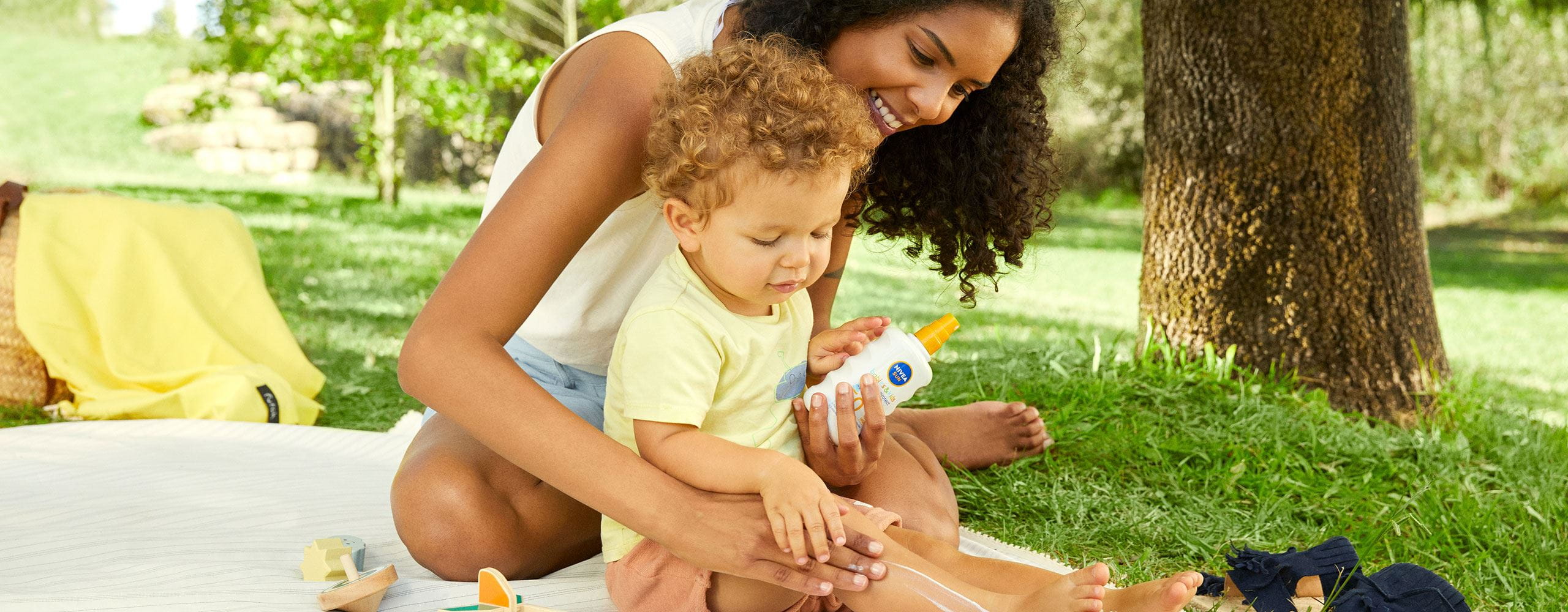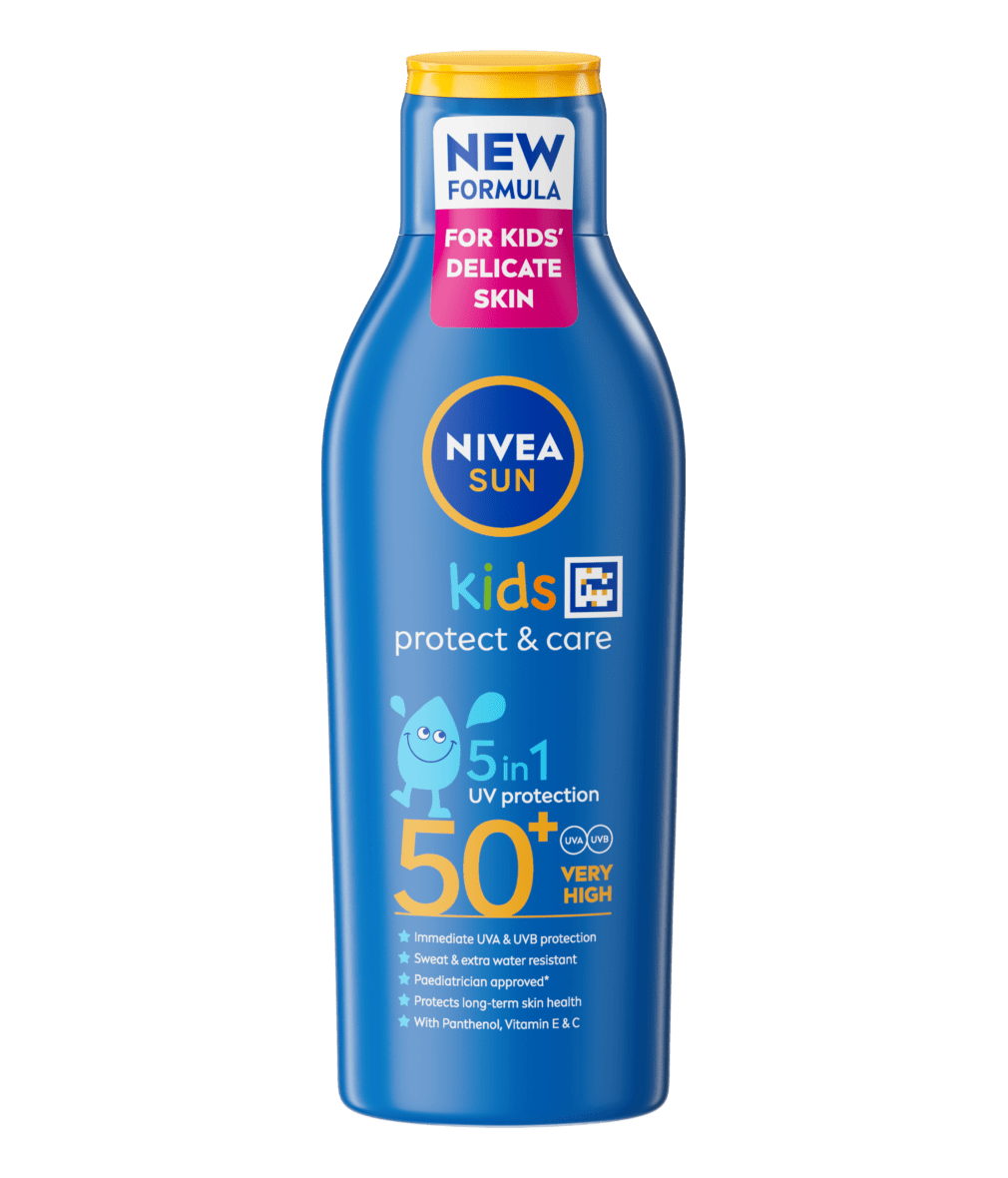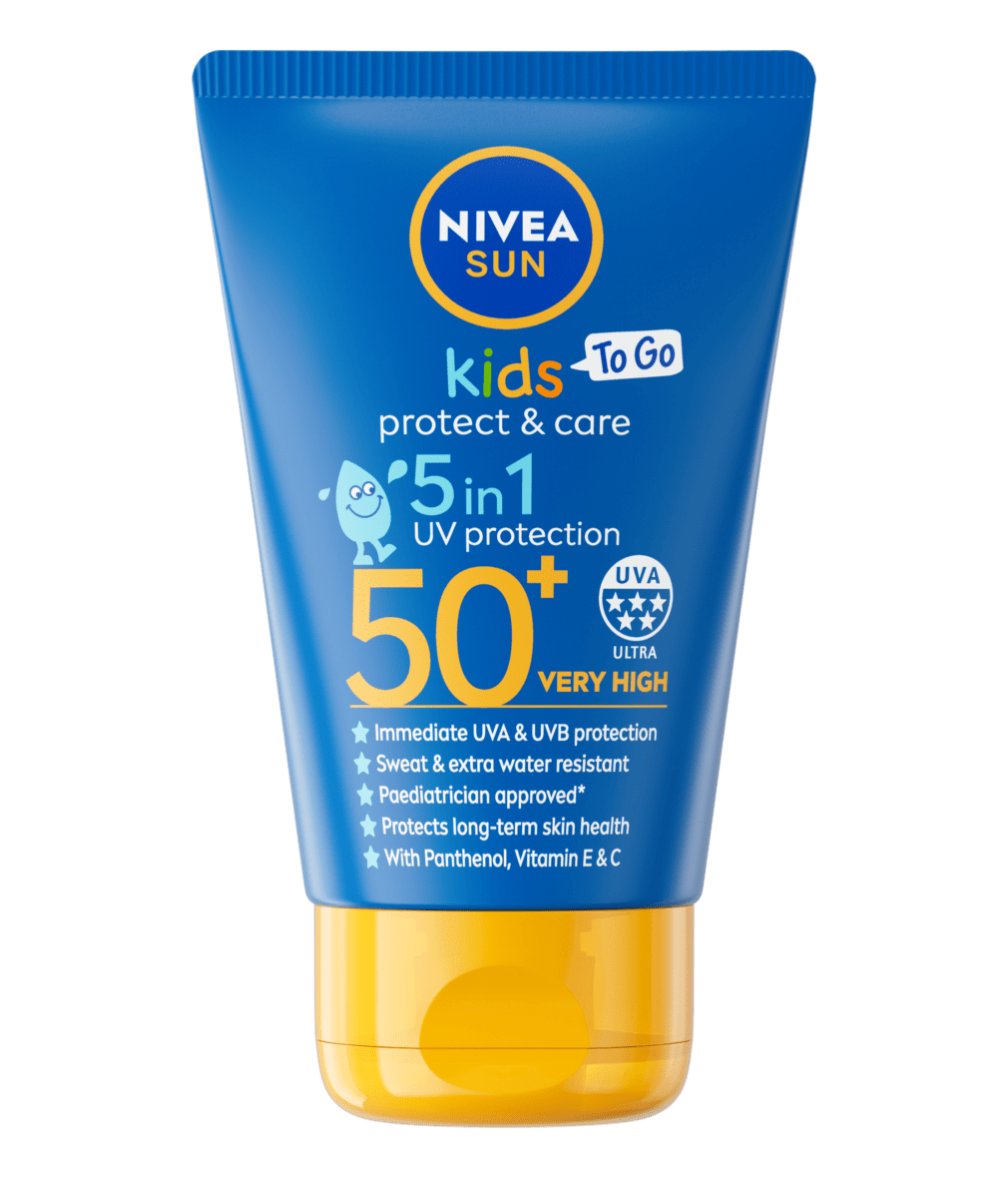In theory, applying baby sunscreen is as straightforward as applying adult sunscreen – but you have a potentially wriggly baby to deal with! The goal is to apply sunscreen thoroughly and evenly to any exposed areas of the skin. To help you along the way, here are a few tips:
Focus on exposed skin: Spread a liberal amount of baby sunscreen in the areas where the skin is exposed. Typically, this will include the face, ears, neck, and the backs of the hands. But in the summer, you might need to cover more areas, including your little one’s arms, legs, and feet.
Get creative: Not all babies will sit still and let you apply sunscreen thoroughly! Sometimes, you might need to get a little creative and make a game out of it. Or, try a different application approach, such as NIVEA Sun Babies & Kids Sensitive Protect SPF 50+ Roll On, which makes application a lot easier for you and fun for your child!
Have fun: Thanks to NIVEA Sun’s immediate protection formulas, no waiting is necessary!
HOW OFTEN DO YOU NEED TO APPLY SUNSCREEN TO YOUR BABY?
Because the sunscreen’s protection gradually fades through normal activity (like sweating, rubbing, etc.), it’s important to reapply at least every two hours. If your little one is swimming or playing in the water, reapply more often, especially after they leave the water and their skin starts to dry. It’s helpful to know that reapplying sunscreen doesn’t enhance its protection; rather, it simply maintains the existing protection, which is why you’ll need to reapply often.
HOW TO REMOVE BABY SUNSCREEN
Baby sunscreen that’s dermatologically proven is safe for your little one, so there’s no harm in letting it sit on your child’s skin for the day. Upon returning home, you can bathe your baby as usual, either using a damp cloth to wipe their skin, with a sponge bath, or in an infant tub.



